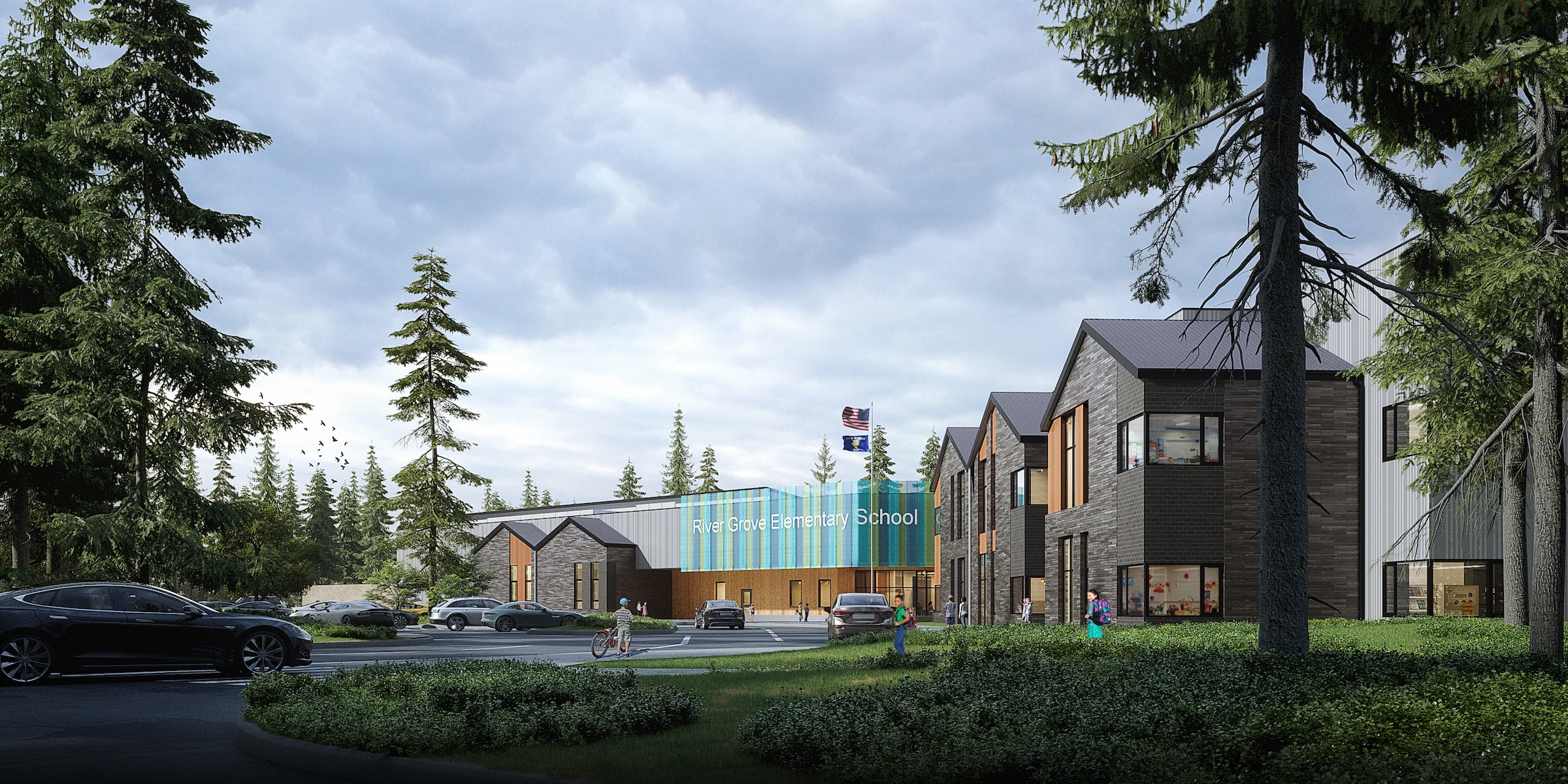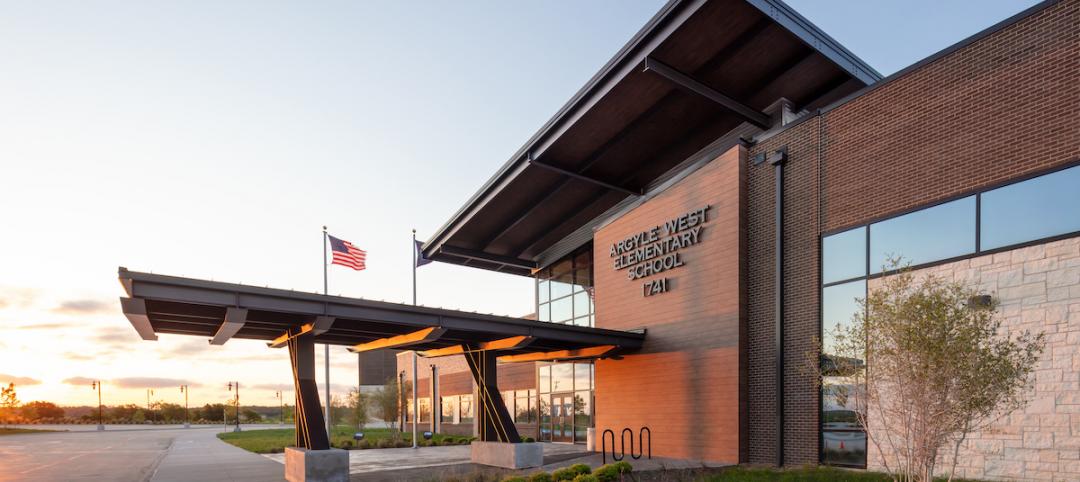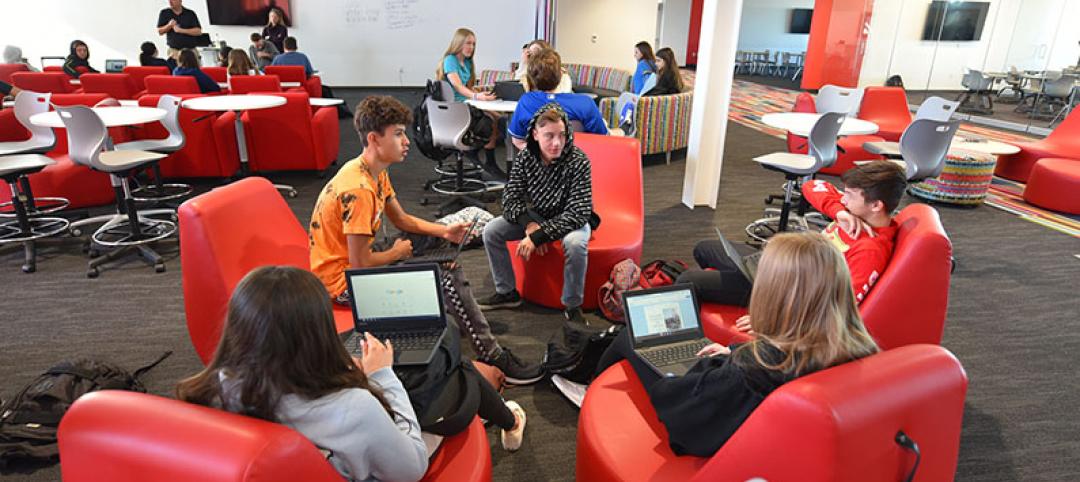River Grove Elementary School in Lake Oswego, Ore., was designed to be fully electric and resilient to natural disasters such as seismic events, storms, and wildfire. The roughly 78,000-sf school in a Portland suburb will feature a microgrid—a small-scale power grid that can operate independently from the area’s electric grid.
Design of the microgrid system was developed through a collaboration between the school district and the local utility provider. River Grove will be one of the first American schools to be constructed with a microgrid.
The structure is designed to a higher seismic factor as a Category IV building to serve as a resource for the local community in the event of an earthquake or other natural disaster. Portions of the building will continue to function during a prolonged power outage thanks to the large photovoltaic array and battery energy storage system.
The building has a sophisticated heating, cooling, and ventilation system, a critical feature in an area experiencing soaring temperatures during heatwaves in recent years. The region has also been impacted by smoke-filled air from forest fires and ice storms causing power outages for weeks.
River Grove is a replacement of a 1967 elementary school that existed on the same site. The previous 68,846 sf school was fully demolished, and students moved off-site to another school during construction.
The new school will provide classrooms, extended learning areas, an innovation lab, music room, stage, library, administration offices, gymnasium, kitchen, an outdoor covered play area, outdoor learning spaces, and play fields. The building is designed for a capacity of 600. The previous facility had a capacity of 575.
Construction kicked off in June 2022, with completion expected for the school’s opening in Fall 2024.
Owner and/or Developer: Lake Oswego School District
Design Architect: Arcadis
Architect of Record: Arcadis
MEP Engineer: Glumac
Structural Engineer: KPFF
General Contractor: Triplett Wellman
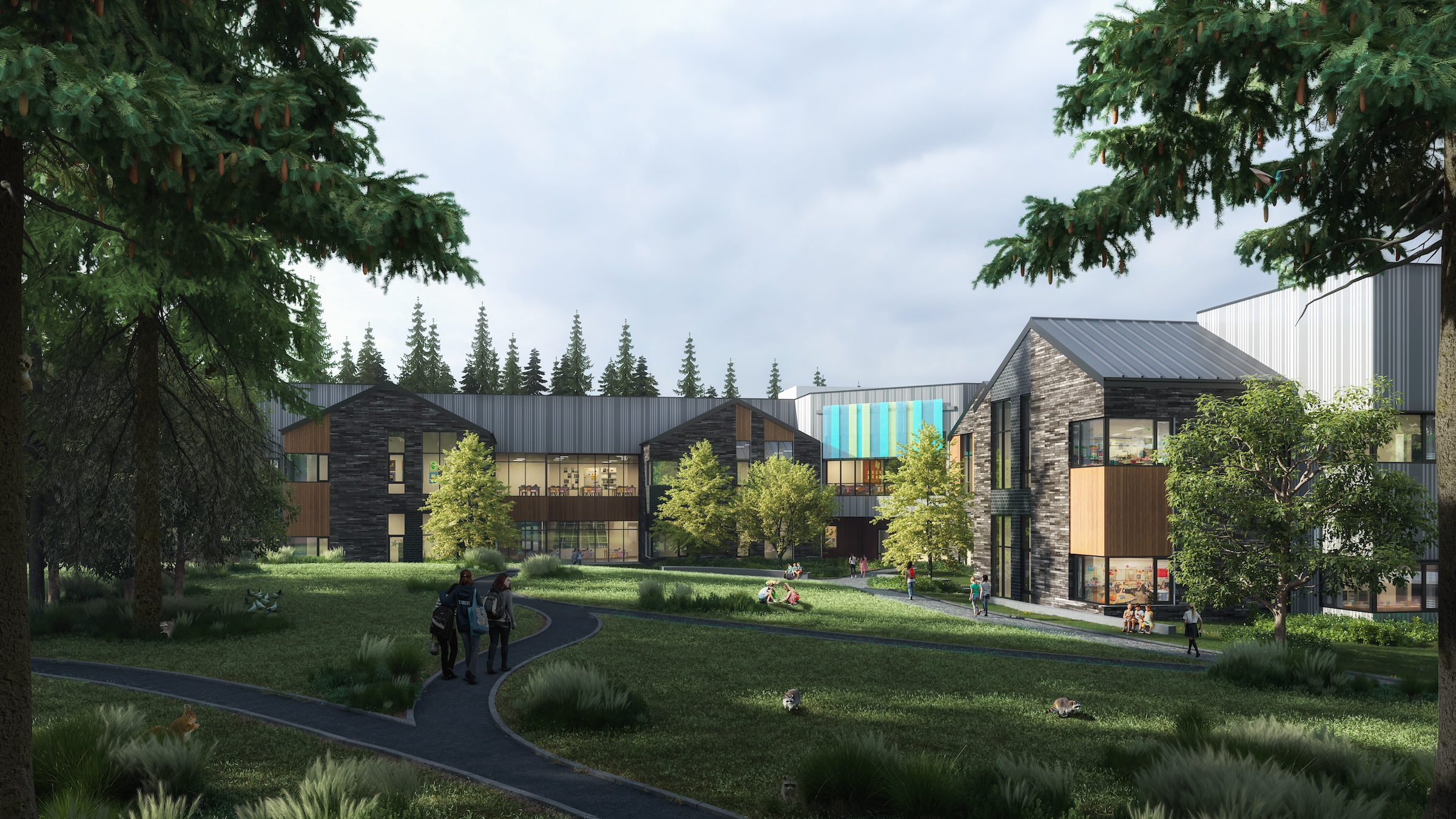
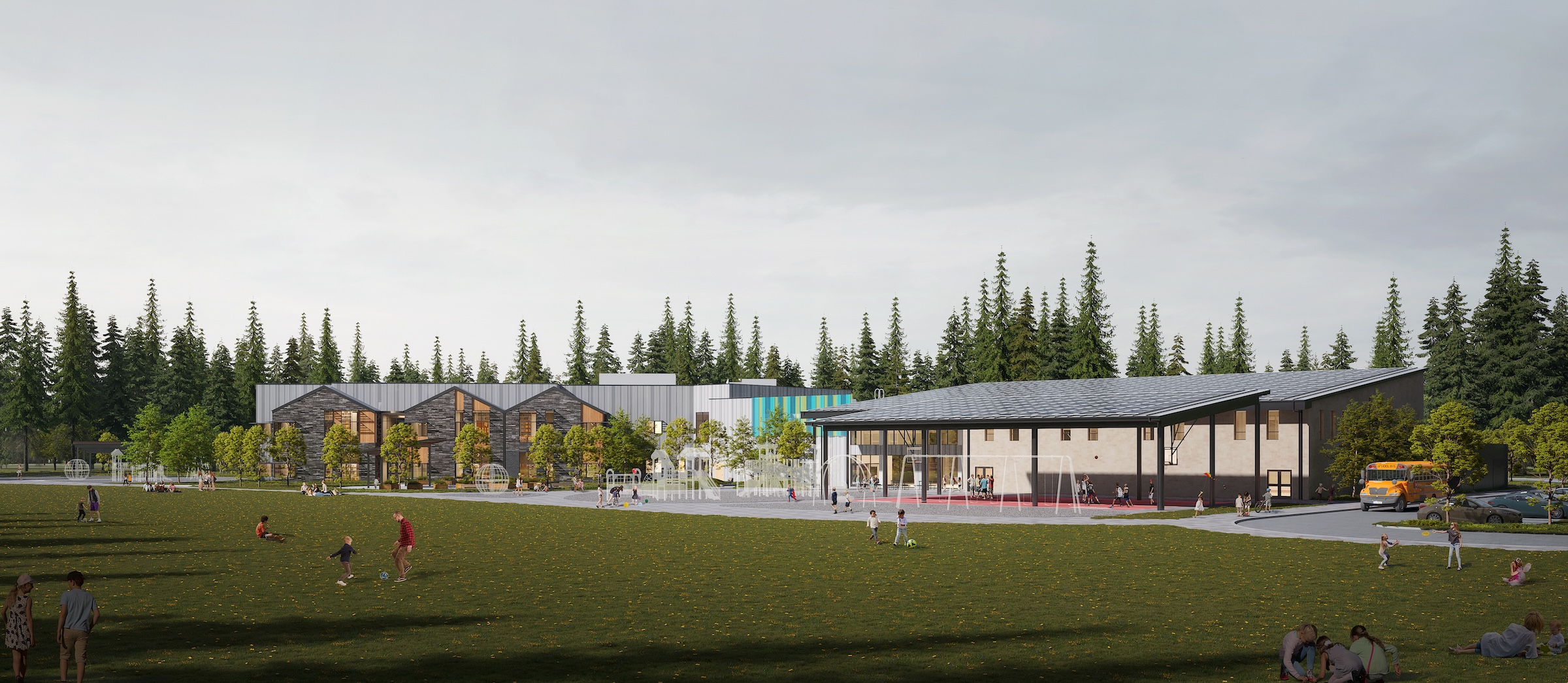
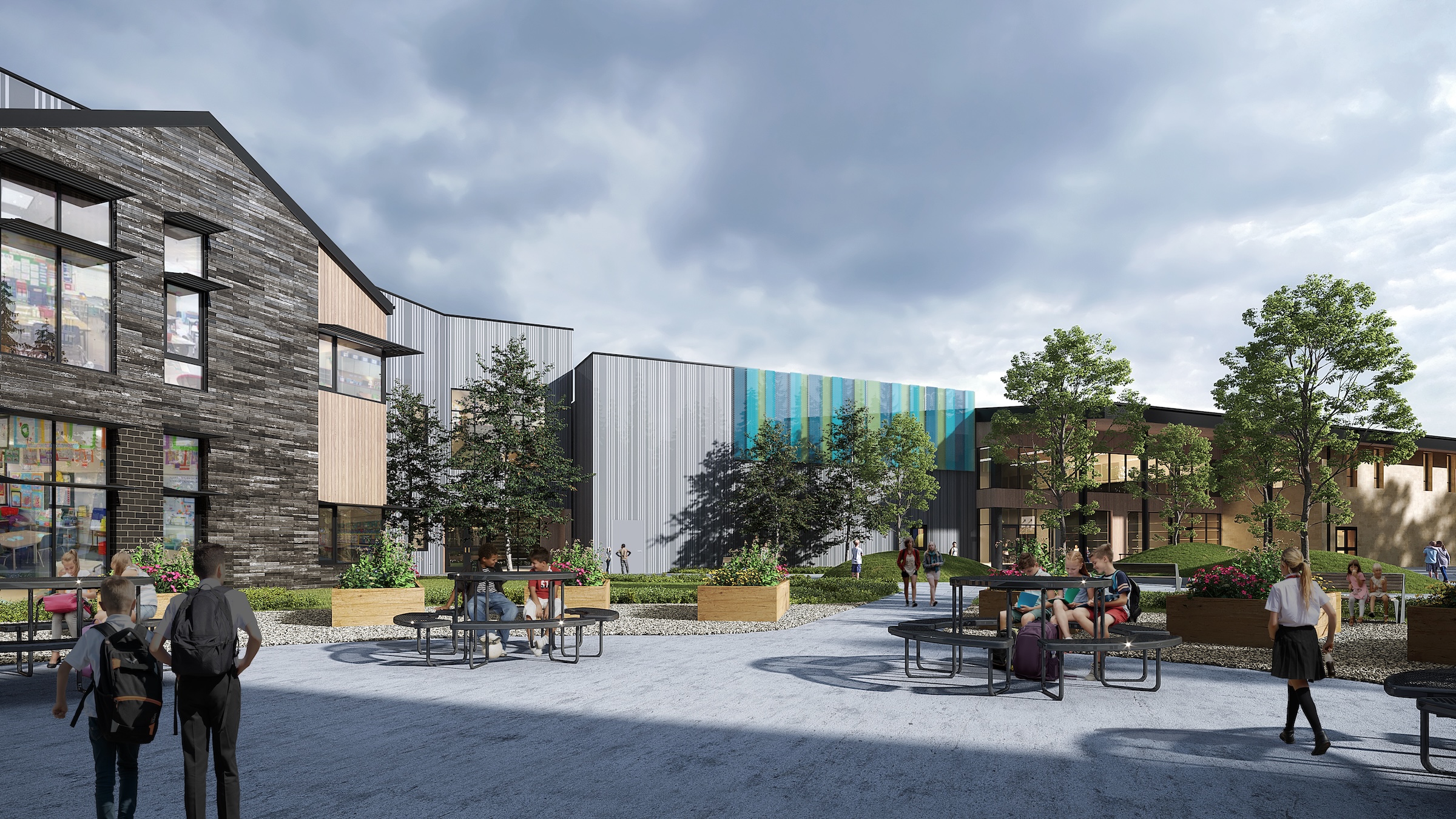
Related Stories
Giants 400 | Dec 3, 2020
2020 K-12 School Sector Giants: Top architecture, engineering, and construction firms in the U.S. K-12 school facilities sector
AECOM, Gilbane, and PBK head BD+C's rankings of the nation's largest K-12 school facilities sector architecture, engineering, and construction firms, as reported in the 2020 Giants 400 Report.
AEC Tech | Nov 12, 2020
The Weekly show: Nvidia's Omniverse, AI for construction scheduling, COVID-19 signage
BD+C editors speak with experts from ALICE Technologies, Build Group, Hastings Architecture, Nvidia, and Woods Bagot on the November 12 episode of "The Weekly." The episode is available for viewing on demand.
K-12 Schools | Oct 23, 2020
K-12 sector adjusting to ‘new priorities’
Health and safety now rank with security for design and construction criteria.
Coronavirus | Oct 8, 2020
The Weekly show: Statue of Liberty Museum, emotional learning in K-12, LA's climate change vulnerability
The October 8 episode of BD+C's "The Weekly" is available for viewing on demand.
Coronavirus | Sep 1, 2020
6 must reads for the AEC industry today: September 1, 2020
Co-working developers pivot to survive the pandemic, and the rise of inquiry-based learning in K-12 communities.
K-12 Schools | Sep 1, 2020
The rise of inquiry-based learning in K-12 communities
Inquiry-based education offers a methodology that does not rely solely on the educator being the lead in all learning.
Giants 400 | Aug 28, 2020
2020 Giants 400 Report: Ranking the nation's largest architecture, engineering, and construction firms
The 2020 Giants 400 Report features more than 130 rankings across 25 building sectors and specialty categories.
K-12 Schools | Aug 6, 2020
HMC releases COVID-19 Campus Reboot Guide for PreK-12 schools
Ongoing research effort includes whitepaper series that outlines resiliency solutions for healthcare, civic and education markets.
Coronavirus | Jun 19, 2020
Experts address COVID-19's impact on nursing homes and schools on The Weekly
The June 18 episode of BD+C's "The Weekly" is available for viewing on demand.
Coronavirus | Mar 30, 2020
Learning from covid-19: Campuses are poised to help students be happier
Overcoming isolation isn’t just about the technological face to face, it is about finding meaningful connection and “togetherness”.


